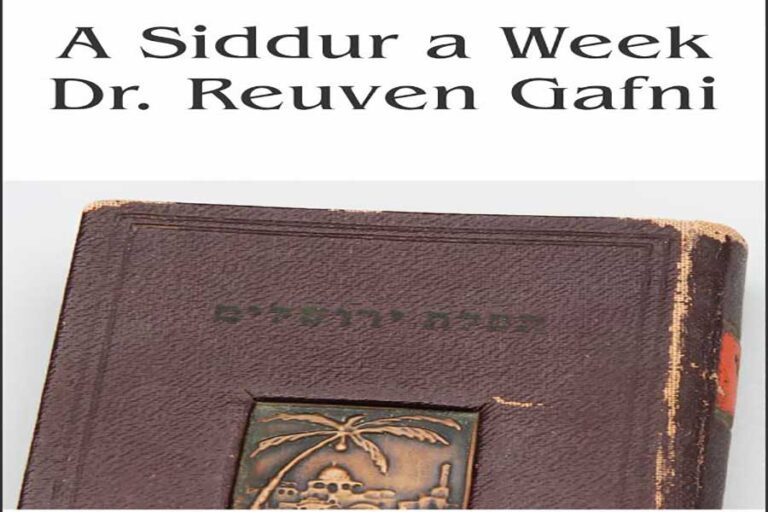During one of his visits as a clandestine âNativâ emissary to the Soviet Union in the early 1980s, my father encountered an elderly Jew who quoted whole sections of the Bible and the Gemara by heart. When asked where he learned to do so, the man responded that he remembered his studies âfrom before the revolution,â some sixty years earlier. Such shared Jewish memory â which survived for most of the twentieth century, just beneath the surface â served as the basis of one of the most important editing decisions for the Shivchei Ge’ulim siddur.
 âGeâulim: The Public Committee for Social and Spiritual Absorption of Olim From the Soviet Unionâ was an organization established in the early 1970s at the initiative of Rabbi Avraham Halevi Sher, the veteran head of the Vaâad Hayeshivot and the founder and editor of the established Torah scholarship journal Moriah. As part of its work, the vaâad initiated social and spiritual activities for the new immigrants to Israel, including the first mass seder Pesach in Jerusalem in 1975, which involved hundreds of olim of all ages.
âGeâulim: The Public Committee for Social and Spiritual Absorption of Olim From the Soviet Unionâ was an organization established in the early 1970s at the initiative of Rabbi Avraham Halevi Sher, the veteran head of the Vaâad Hayeshivot and the founder and editor of the established Torah scholarship journal Moriah. As part of its work, the vaâad initiated social and spiritual activities for the new immigrants to Israel, including the first mass seder Pesach in Jerusalem in 1975, which involved hundreds of olim of all ages.
Alongside this activity, Rabbi Sher initiated the publication of a number of Jewish calendars and bilingual siddurim, which were sent to Jews in the Soviet Union, Soviet Jews who immigrated to the United States and Canada, and those Soviet Jews who succeeded in overcoming all the obstacles to make it to the State of Israel.
The different target audiences led to the siddurim being printed in two versions: while the siddurim for olim from the Soviet Union contained the Israeli national prayers, those sent through various clandestine paths to Soviet Jews themselves contained no elements which might anger the Soviet authorities.
The first version of the bilingual Shivchei Ge’ulim siddur was published in 1975. It was based on an old translation of Jewish prayer into Russian which was included in the Beit E-l siddur from 1902 and which was written by Asher Ben Eliezer Wohl, âa teacher at the pedagogic school of education and a reviewer of books of Israel in Vilna.â
By contrast, future editions of Shivchei Ge’ulim â which appeared with the mass aliyah of Soviet Jewry at the end of the 1980s â were included in a new siddur in Russian translation, whose author was not mentioned. By this point, the siddurâs production was supported by the Israeli Religion Ministry. Thus, in the version appearing in 1991-92, it included the welcome message of then-Minister Avner Hai Shaki, who noted that âthis siddur is greater than its predecessors, including in the language of translation common and spoken among you.â
The siddur produced for olim that year was based on nusach Sefard and included the prayers for weekdays, Shabbat, and some of the holidays. Its final section included a few new pages which included the prayers said on Israeli Memorial and Independence Day (copied from the Koren siddur), and brief prayer instructions for Jerusalem Day (copied from Rinat Yisrael).
Of particular interest was the decision of the heads of the vaâad to rely on a previous siddur, which included fairly detailed prayer instructions in Yiddish, for the Hebrew portion of the siddur. They appear to have done so for the older olim, some of whom used the language decades earlier in their childhood or youth, allowing them to feel comfortable using both the Russian part of the siddur and the prayer instructions in the language of their earlier life.
The siddur was thus effectively a trilingual one, containing within it the tangled story of the Jews of the Russian Empire and the Soviet Union throughout the twentieth century: first under the Czar, then in the shadow of communist rule, and finally â to much joy and gratitude â as Jews living in the State of Israel.
My thanks to Mosheâleh Dermer for turning my attention to this siddur.
Originally published on JFeed.com.


